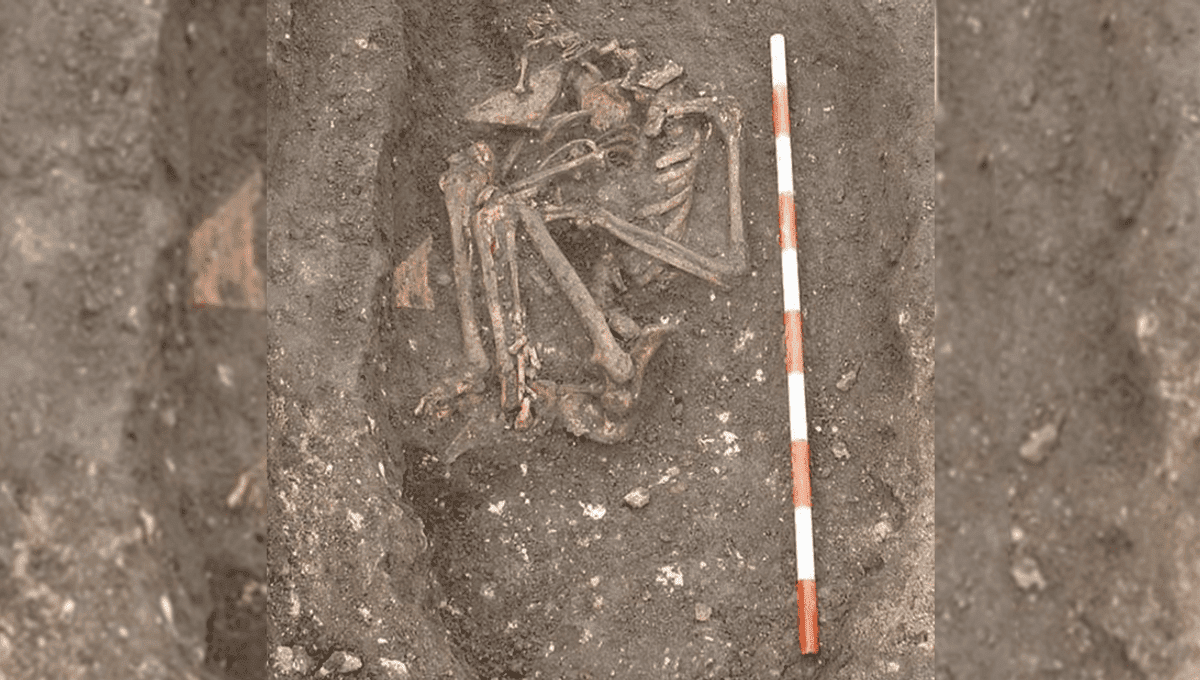
Introverts across the world would likely understand the desire to isolate themselves for long periods of time, but a recent archaeological discovery shines light on a little-known medieval practice that would make even the most austere introvert blush. Researchers with the University of Sheffield and Oxford Archaeology have unearthed the remains of a 15th century woman, thought to be Lady Isabel German, who shut herself away in a room of the All Saints Church in Fishergate, York, for 28 years.
Lady German was an anchoress – a type of religious hermit – who is documented as having lived at the church around the middle of the 1400s. An anchoress (the male equivalent was an “anchorite”) chose to enclose themselves in walled-up cells to undertake a life of contemplation and prayer.
Although the practice likely dates back to the earliest days of the church in England, there were no records of it before the 11th century. After that, it became a remarkably popular, if extreme, practice. Scholars have found that there were around 100 anchoresses and anchorites in England during the 12th century and around 200 from the 13th to the 15th centuries.
It also seems that this extreme practice was more popular among women than men, as anchoresses outnumbered anchorites throughout the period of its existence. Prior to the rise of this practice, reclusive life was restricted to the type of asceticism for established monks and nuns, but becoming an anchoress essentially gave women a way to pursue a solitary ascetic life with autonomy and privacy. Above all, it enabled them to avoid a life of domestic necessity and forced marriage.
Usually, an anchorite or anchoress would live in a single stone room attached to the side of a church. This room generally had no exit but would have three small windows – one that opened to the outside world, one that allowed them to receive food or pass out a chamber pot, and one, called the “squint”, that opened into the church so the occupant could observe Mass and partake in the Eucharist.
The anchoress’s food and maintenance were taken care of by servants hired specifically for this purpose, as the privilege of being a recluse of this nature was not something for the poor. In fact, a potential anchoress would have to apply to their local bishop and demonstrate that she had the means to support herself while enclosed.
While it is not 100 percent certain that the body at All Saints Church is indeed Lady German, the dating of the remains matches closely with the historical references to her time there. The skeleton was first discovered in 2007 and was buried in a tightly crouched position within the apse of the church foundations, a small space located behind the altar.
According to Dr Lauren McIntyre, University of Sheffield Alumna and Osteoarchaeologist at Oxford Archaeology Limited, this is strong evidence that the remains belong to Lady German. In a statement, Dr McIntyre said: “The location of the skeleton in the apse suggests this was a woman of high status, but the crouched burial position is extremely unusual for the medieval period.”
The lab analysis also shows that the woman was living with septic arthritis and suffered from advanced venereal syphilis. This would have meant the individual “lived with severe, visible symptoms of infection affecting her entire body, and later on, neurological and mental health decline,” said McIntyre.
“Lady German lived in a period of history where we typically think of there being a strong association between visible and disfiguring illnesses and sin, with that type of suffering seen as a punishment from God. While it is very tempting to suggest that someone with visible disfiguring disease would be shunned or want to commit to living as an anchoress as a way to hide from the world, this research has shown that this might not be the case. Such severe disease could also have been viewed positively, being sent by God to grant martyr-like status to someone special.”
The research is published in Medieval Archaeology.
Source Link: Mysterious Skeleton Could Belong To A Rare Medieval Hermit